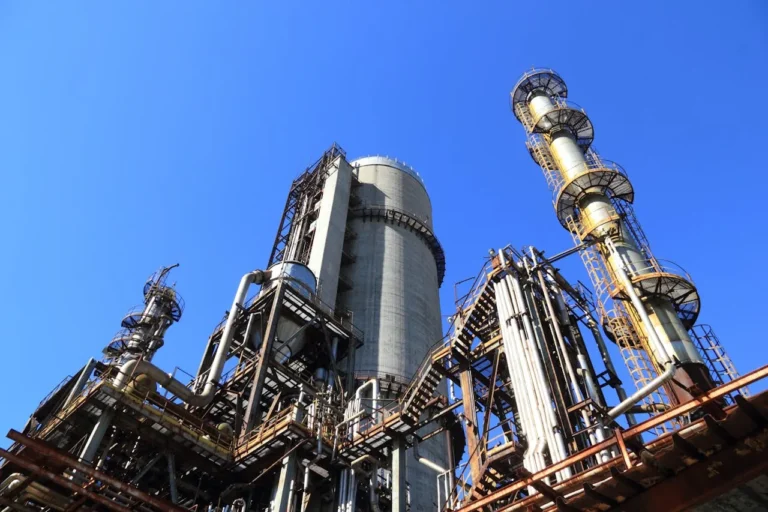
Orbia Reports Second Quarter 2025 Financial Results: Navigating Challenges, Focusing on Operational Discipline and Strategic Growth
Orbia has reported its financial results for the second quarter of 2025, delivering total revenues of $1.97 billion and EBITDA of $300 million amid ongoing global economic pressures. The results reflect the company’s continued focus on operational efficiency and financial resilience, despite softer demand and rising costs in certain business segments. Encouragingly, the company is beginning to see signs of market stabilization and localized improvement in select regions, giving it cautious optimism for the remainder of the year.
Business Overview and Market Conditions
During the second quarter, Orbia faced continued macroeconomic headwinds including inflationary pressures, foreign exchange volatility, and uneven market demand across its portfolio. Nonetheless, the company made meaningful strides in advancing its operational priorities, maintaining or improving market positions in most of its business groups. While Polymer Solutions and Building & Infrastructure continued to face headwinds, other divisions such as Fluor & Energy Materials, Connectivity Solutions, and Precision Agriculture demonstrated resilience and year-over-year growth.
“Our second quarter performance demonstrates Orbia’s underlying strength and resilience in a persistently challenging global landscape,” said Sameer Bharadwaj, CEO of Orbia. “While some of our markets have yet to fully rebound, we are seeing early signs of stabilization, with pockets of growth emerging. Our focus remains on what we can control—enhancing efficiency, improving free cash flow, and positioning the company for long-term, sustainable value creation.”
Q2 2025 Financial Highlights
(All figures are compared to Q2 2024 unless otherwise specified.)
- Revenues: Total net revenues for the quarter stood at $1.97 billion, nearly flat on a year-over-year basis. While revenue declines in Polymer Solutions and Building & Infrastructure impacted the overall top line, they were counterbalanced by improved performance in Fluor & Energy Materials, Connectivity Solutions, and Precision Agriculture.
- EBITDA: Reported EBITDA was $300 million, representing a year-over-year decrease of 10%. The decline was largely attributable to pricing pressure in Polymer Solutions and unfavorable product mix in Building & Infrastructure, along with generally higher input costs.
- EBITDA Margin: EBITDA margin decreased by 166 basis points to 15.2% compared to the same quarter last year.
- Operating Cash Flow: Operating cash flow improved to $47 million, a $43 million increase from the prior year quarter. This improvement stemmed from reduced interest expenses and a lower cash impact from accruals and incentive compensation, partially offset by lower EBITDA.
- Free Cash Flow: Free cash flow stood at negative $82 million, but still marked a year-over-year improvement of $48 million.
- EBITDA Guidance: Orbia reaffirmed its full-year 2025 adjusted EBITDA guidance, excluding non-operating items, in the range of $1.1 billion to $1.2 billion.
Segment and Cost Analysis
The decline in revenues within the Polymer Solutions segment was primarily due to lower average selling prices, reflecting global supply-demand imbalances and pressure on commodity pricing. Building & Infrastructure also reported lower revenues, largely due to decreased volumes in specific countries. These shortfalls were offset by growth in other divisions:
- Fluor & Energy Materials benefited from rising demand and pricing improvements in certain fluorinated products.
- Connectivity Solutions saw robust momentum in both product demand and volume.
- Precision Agriculture continued to grow as global emphasis on water-efficient agricultural solutions gained further traction.
Cost of goods sold for the quarter was $1.534 billion, an increase of 4% year-over-year. The rise was largely driven by higher raw material costs, particularly in Polymer Solutions and Fluor & Energy Materials. Nevertheless, the company managed to partially offset these increases through operational efficiencies and cost-saving initiatives implemented across business units.
Selling, general and administrative (SG&A) expenses decreased by 10% to $295 million for the quarter. As a percentage of sales, SG&A fell 163 basis points to 15.0%. This reduction was primarily driven by continued execution of cost control strategies and efficiency improvements, which remain central to Orbia’s financial strategy.
Profitability and Financial Expenses
The company reported a net loss attributable to majority shareholders of $126 million in Q2 2025, compared to net income of $195 million in the same period last year. The shift was primarily driven by a sharp increase in income tax expense, higher financial costs, and lower operating income.
Financial expenses totaled $96 million for the quarter, a significant increase of approximately $60 million year-over-year. This increase was largely due to a shift from a favorable foreign exchange (FX) gain in the prior year to a slight FX loss in the current quarter, particularly due to the appreciation of the Mexican Peso against the U.S. Dollar.
Tax Expense and Effective Tax Rate
Orbia recognized an income tax expense of $143 million for the quarter, in stark contrast to an income tax benefit of $85 million in the same quarter last year. The change was attributed to a shift in the company’s earnings profile and the effects of local currency movements, especially the Mexican Peso’s appreciation.
The effective tax rate for the quarter was 334%, significantly elevated due to multiple discrete factors. These included changes in the earnings mix across jurisdictions, currency fluctuations, and inflationary adjustments in certain regions. Excluding these temporary effects, the normalized effective tax rate was approximately 124%. However, management emphasized that this is not representative of the company’s typical rate, which historically ranges between 27% and 32%.
Balance Sheet and Debt Management
At the end of the quarter, Orbia reported total debt of $4.875 billion and cash and cash equivalents of $859 million, resulting in a net debt of $4.016 billion. The company’s net debt-to-EBITDA ratio increased from 3.67x in the previous quarter to 3.98x. This was primarily due to an increase in total debt by $189 million and a $34 million decline in trailing 12-month EBITDA.
Using EBITDA adjusted for non-operating items to better reflect underlying earnings, the company’s net debt-to-EBITDA ratio increased from 3.23x to 3.51x during the quarter. Despite the rise, Orbia remains committed to prudent capital management and expects improvement as cash flows normalize in the coming quarters.
As part of its long-term strategy, Orbia successfully refinanced a portion of its debt, raising approximately $1.4 billion during the quarter. This refinancing effort extended all significant debt maturities to 2030 and beyond, significantly enhancing the company’s financial flexibility and reducing near-term refinancing risk.







